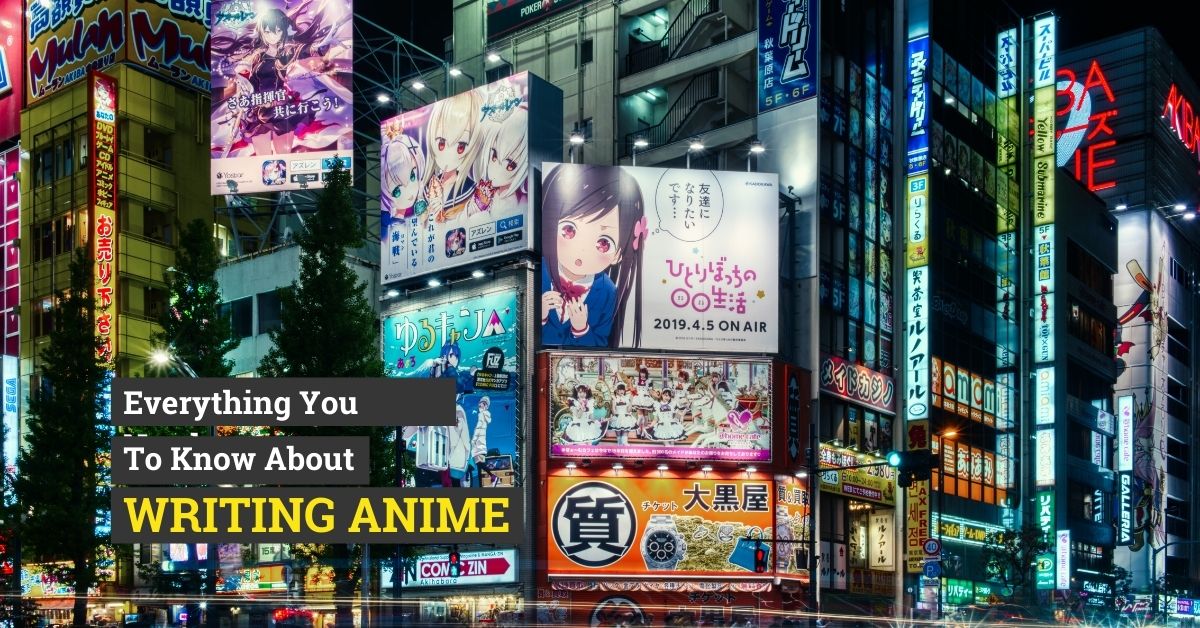Ever considered writing anime? And… you don’t seem to have the slightest idea of going about it.
Maybe, you just want to write anime for the sake of writing, or you like anime, or you’re an Otaku and would like to write your own anime because that would be tons of fun.
I have made the perfect post for you!
Not only is this post going to introduce anime to those that know nothing about it, but it’s also going to explain the fundamental elements of anime, differentiate anime scripts from ‘other’ film scripts, and list the things that make anime writing good among other things.
Without further ado, let’s get into it.
What Is Anime?
In Japan, anime is every type of animation, but for most of us who aren’t Japanese, anime refers to “animation made in Japan.”
We usually associate the word ‘anime’ to any animated piece that uses elements that have a touch of the Japanese style of animation. Normally anime has dramatic panning, vibrant colors, and characteristic facial expressions, among other signature elements.
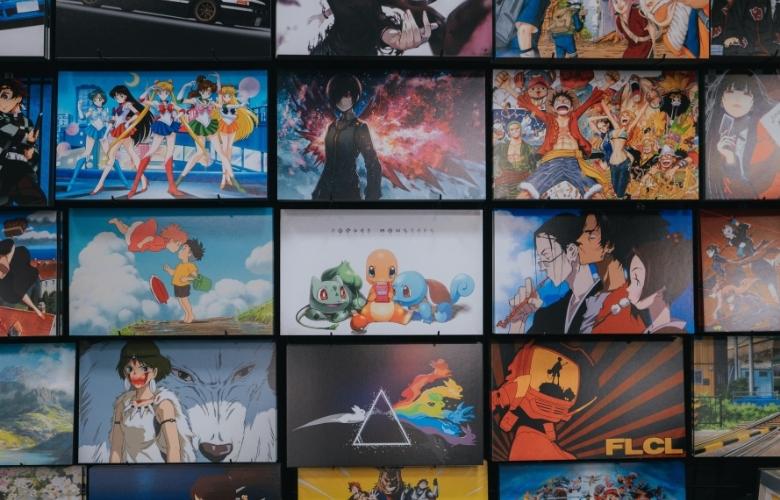
In the U.S., Otakus are slowly increasing in numbers as anime slowly progresses into a mainstream form of entertainment. On the other hand, in Japan, anime is an accepted form of entertainment but not necessarily made for kids as is usually the case with Disney-esque cartoons. Anime is more dynamic and has content that is suitable for a wide range of viewers who are into genres like action, comedy, drama, historical fiction, horror, and many more.
And, unlike most cartoons, an anime show or movie usually comes with a deep meaning or message attached.
They’re used to tackle social, scientific, psychological issues, but mostly, they cover supernatural themes and myths. And… among all the types of cartoons, they’re the least censored so they aren’t the type you could let your kids watch.
Who Can Write Anime?
Anyone can write Anime. I see a lot of comments (especially on increasingly irrelevant social media platforms) that you can’t write Anime if you’re not from or not in Japan.
That’s a bag of nonsense if you ask me.
In this age and era, anyone who has an interest can write an anime. But, you still have to write the Japanese way—or with elements of Japan, in other words.
Important Elements of Anime
Before you start writing anime, there are a couple of things you must consider, here are some of them:
Theme
With anime, there are almost no holds barred, and you can choose a theme that is rather a bit taboo in other genres. Even then, violence and sex themes can creep in – welcome to the tone of anime writing.
Format
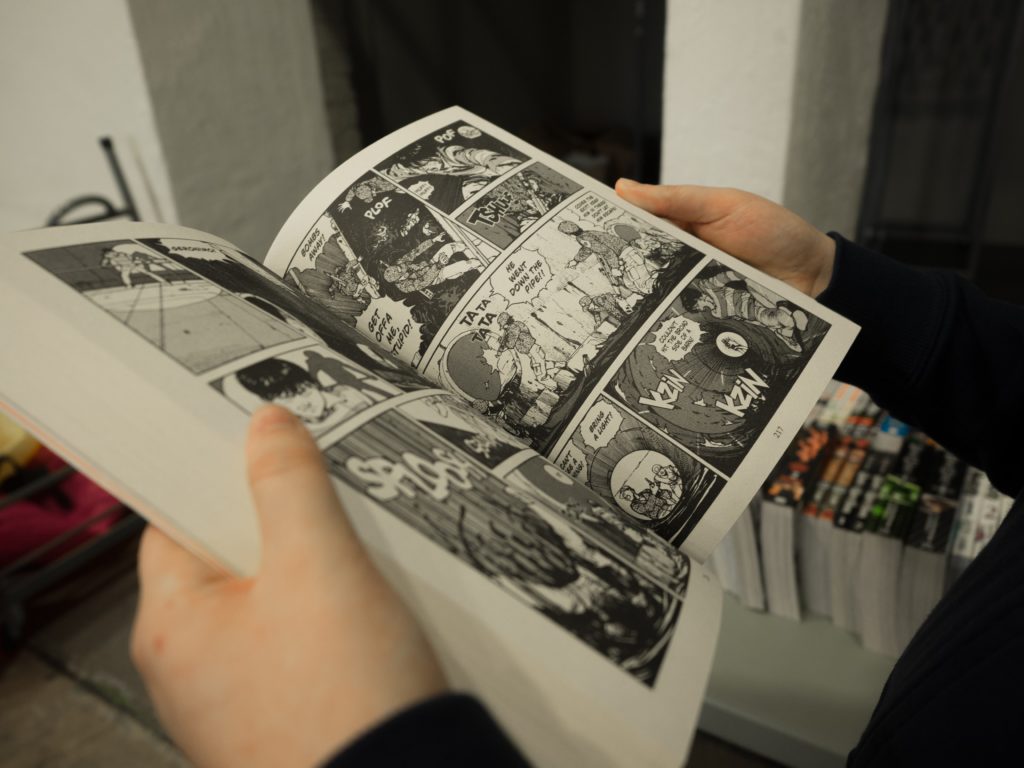
If you’re a newbie, it’d do a lot of good with manga. Anime follows the same format as comics—Captain America and Co. started from comic books, and a lot of anime comes from manga. Manga is the written comic version of Anime.
Emotional appeal
Normally, you’re not going to be writing anime for kids. The audience is pretty much older, and you want your anime to be more emotionally appealing to wider audiences, including young adults.
Culture
Culturally, it’s not anime if it lacks elements of Japanese culture. It’s like creating random ballroom dance moves that do not have any Brazilian or Latin American elements and calling them Samba. Anime has to have things that relate to Japan and Japanese culture.
Supernatural
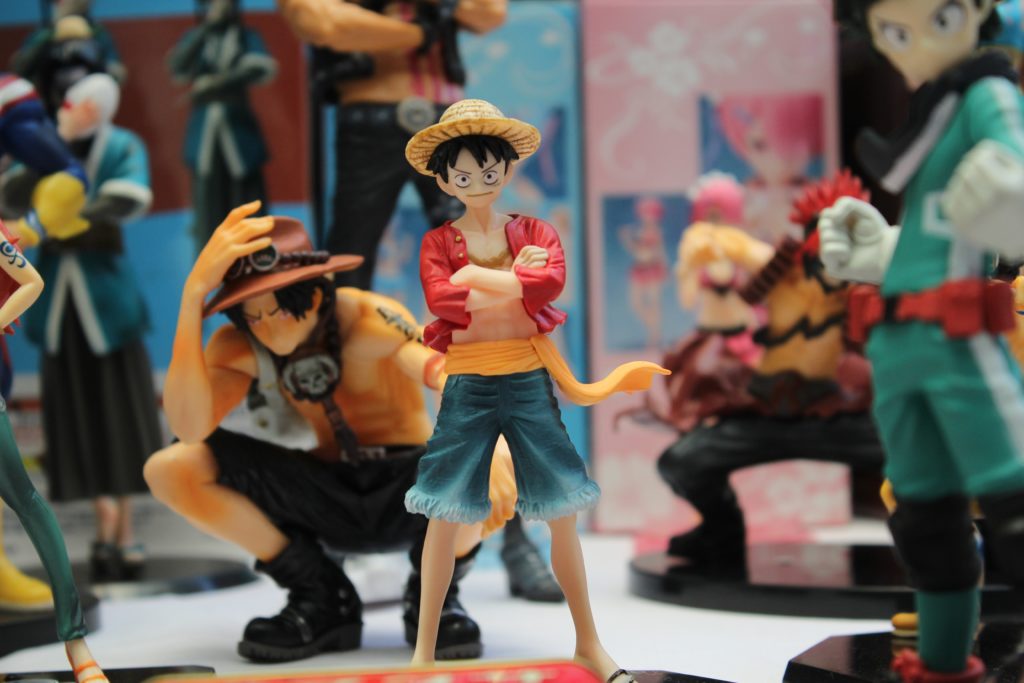
This is a theme that is in almost every anime piece—in my experience and… opinion, supernatural elements kind of increase the interest of the audience. Of course, you can leave this factor out, but I can confidently tell you that giving your characters some supernatural powers is actually advantageous for your anime.
Outline
Well, writing anime is the same as writing any story because you still have to have a story that flows logically. The way you outline your anime writing is the same as you would outline any other story—you come with your characters and develop them, build the story’s world, and the story has to have its conflicts and a resolution towards the end.
Animation Software
You will still write a comprehensive story, but anime needs its animated characters more than anything. You (or the guy who’s going to animate the story) will need some animation software to bring the story to life.
The Difference between Anime and Film Scripts
You can’t write anime the same way you write ‘usual’ film scripts. You first have to write manga (A graphic novel that originated in Japan, I might have said something about this already).
Basically, you’re writing a script from a comic, not a ‘normal’ movie script. So, in a unique comic style, you draw your story, probably take your manga manuscript to a Japanese publisher, who then makes it possible for you to turn your manga manuscript into a publishable story ready to occupy a place in a magazine.
Afterward, that story can be used by animation studios to make an anime adaptation.
OR
If you have a deal in place with a production company or happen to have a good agent, you write a script similar to a ‘normal movie script,’ but there still has to be graphics and in most cases, the Japanese language.
What Makes an Anime Manuscript Good?
I’ve covered the fundamental elements of anime, but… what does anime writing need to have for it to be considered good?
Creativity and Originality
Yes, all Anime has similar elements (all anime writing has to have that Japanese vibe) but people are looking for anime that is—in a way—avant-garde.
You have to create something so unique and familiar enough at the same time. It’s a challenge, but art is always about creating things that are special in their own way.
The trick lies in being able to tweak the familiar tropes associated with the genre of your anime. Don’t always give the audience what they expect—that is boring, and anime and boring cannot be in the same room.
Why should we deconstruct familiar tropes? Well, everyone is looking for a shot of mystery, change, and excitement, and those things are rarely found in familiar things. By deconstructing familiar tropes of the genre, you’re giving your audience something that is culturally familiar but not recognized and identified, thereby arousing their interest.
Logical Flow and Consistency
Mundane is not the adjective I’d use to explain the concepts behind anime stories. Things in anime are usually not those forged in solid reality, and I don’t think anyone is really bothered by the ordinariness of the events in anime—nobody really cares if anime truly mirrors ordinary reality at all times. However, as much as your audience wants to see magic and stuff that is out of the ordinary, they also want content that is—somehow—consistent in the ‘universe of the show.’
It’s a balancing act that requires you not to go overboard.
Your anime must have rules (whether subtle or clearly stated) and has to be logically consistent from episode to episode or story arc to story arc. If some magic trick just springs up out of nowhere now and then it might seem to be made up for just to further the plot. Advancing the plot isn’t a bad thing, but this lack of rules is bad for consistency.
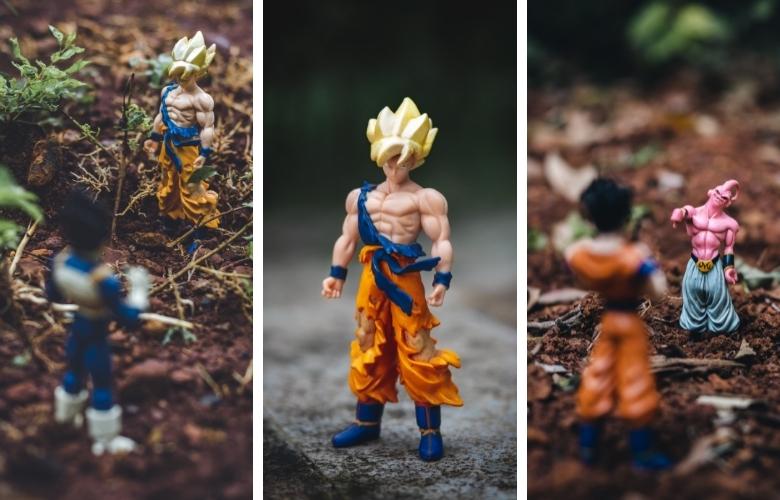
If for some reason, a character’s magical abilities or powers have to increase from episode to episode, then the story should contain some facts about how the character can attain such powers.
You could explain the facts before or after the character has gained the powers, it doesn’t really matter, just make sure that there’s an underlying logic to the character’s development and growth.
When you build a world for your story, you also create things that are possible and things that aren’t. So, what you want is not to let the impossible things happen in that world unless it is a thing the characters thought wouldn’t happen, but you knew otherwise.
Meaning and Emotional Impression
A story has to connect with the audience on an emotional level—it doesn’t always have to leave your audience teary-eyed or rapturous, but it has to get their attention, make them care, and make them want to invest into understanding your characters’ lives.
So, you have to understand that writing anime is a balancing act.
You want to blend some valuable emotions with logical reasoning. Just keep in mind that you’re trying to make something believable, emotional, and meaningful—this isn’t easy, but if you can make something that has an impact on the audience’s emotions, you have succeeded.
How to Write Anime
Writing anime isn’t that different from writing comics, so apart from the things that I have explained in the previous sections, there isn’t anything that’s extra special in the writing process.
I’m not going to give you a blueprint straight out of Japan, but I’m pretty sure that the steps I’m about to illustrate will be quite helpful.
And… I have made so many assumptions to give me a picture of who my audiences (you) are.
One of them is that you’ve chosen the ‘Manga route’ because you don’t have the financial muscle to produce and market your own anime. But I’m going to try my best to write the steps so relatable to using Manga for anime adaption or straight writing anime scripts ready for the screens.
Here’s how you go about writing anime:
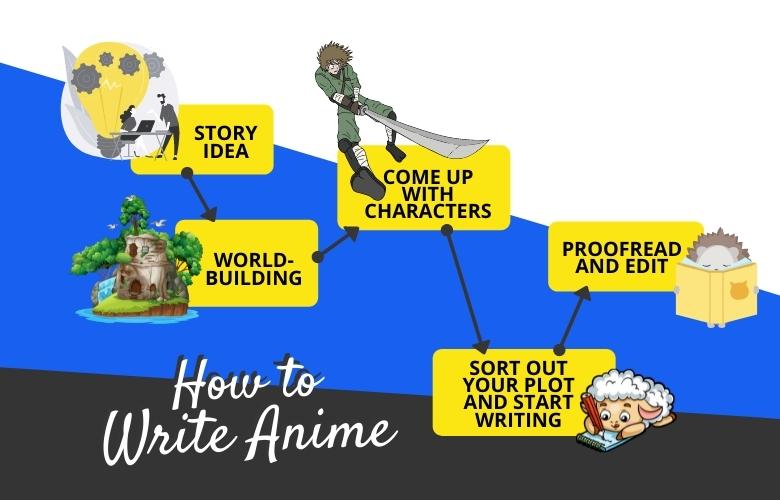
1. Have a Story Idea
I’m also assuming that you’re starting from scratch, and you don’t have a story yet, but if you do, you can move to the next step.
The internet is awash with anime drawing ideas, and these can also be used as writing prompts. I’d recommend you visit Pinterest and check out thousands of pins on anime ideas
2. World-building
The story has to take place in a certain environment—a world within which the characters have to interact.
You could use a place that exists or a fictional world that isn’t a normal, earth-like world—as long as you clearly build it, you’re good.
3. Come Up With Characters
The story needs characters, every story—whether anime or not—needs a well-developed cast.
So, before anything, come up with your main characters and give them a unique but relatable personality. Give your characters emotions, friends, abilities, age, education, et cetera.
You don’t need to come up with every character that’s going to be in the anime, some will introduce themselves in subsequent episodes.
If you know how to draw, this is when you draw some of the characters and their accessories. However, you don’t need to know how to draw to write anime scripts or manga, you can always outsource.
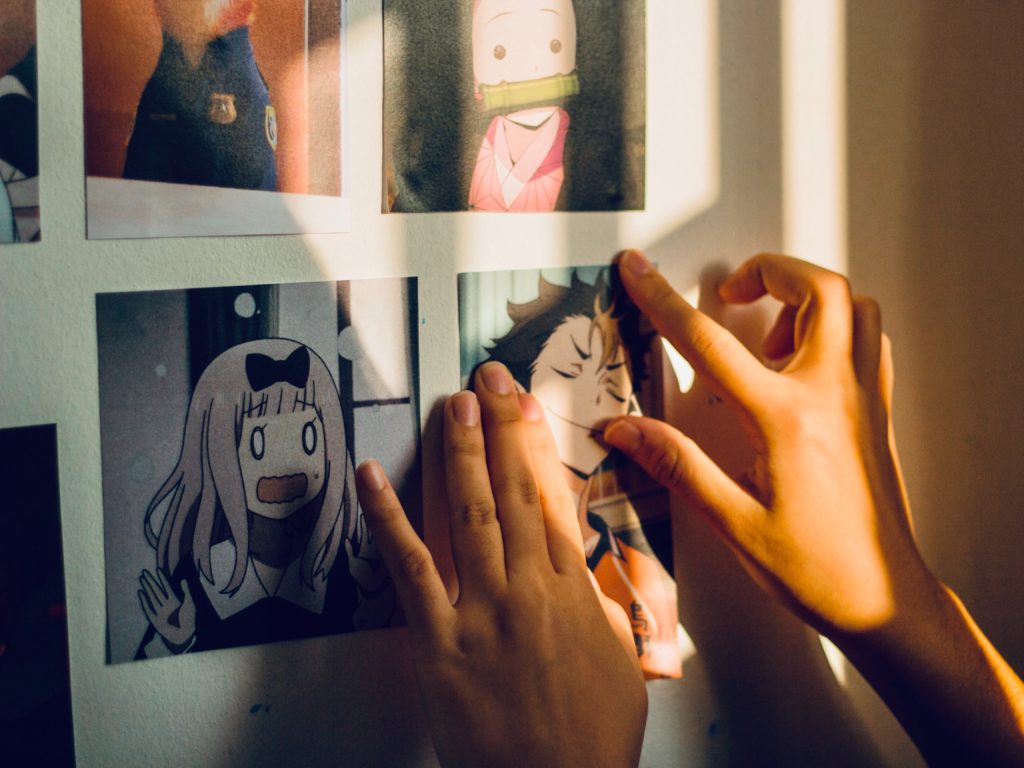
4. Sort out Your Plot and Start Writing
Once you’re done with the main characters and have sorted all the important points in your story, create the storyline, and begin writing.
The best way to start an anime is with a scene that wins your audience—it doesn’t matter whether you start writing this scene or not, just make sure you start with a juicy scene. Then quieten the story a bit, let your audience know the characters and their average life.
Afterward, you start to stir the story again, you throw in big or powerful enemies in there and let your main characters face challenges until the story reaches the climax.
Usually, the climax is a fight scene and the main characters, a scene or set of events during which the main characters defeat a monstrous foe.
Then there’s the resolution, the part that cues in normality and life after the turmoil.
When writing Anime, write it the same way you’d write a play. Put a colon after the character’s name, then write down specific actions within asterisks, and their words in quotes
For example:
Naruto: “I have to go there.”
Shin: *nods in approval and starts following Naruto* Let’s go together.
When writing a scene, Write about 5-10 lines describing what happens in that scene. In the end, when you read through, it should sound like a summary of the whole anime.
Make sure you make your writing as graphic as possible, add notes about the things (i.e., emotions, sighs, pauses, etc.) the voice actor would have to take.
5. Proofread and Edit
Having finished the writing process, it’s time to smoothen the script or Manga and add where necessary. Read through the script and fill in any holes— make sure everything adds up.
If you choose to write in Japanese, which is a very excellent thing, make sure your grammar and punctuation are right on point. You’re probably going to need a language expert if you’re not fluent in the local language.
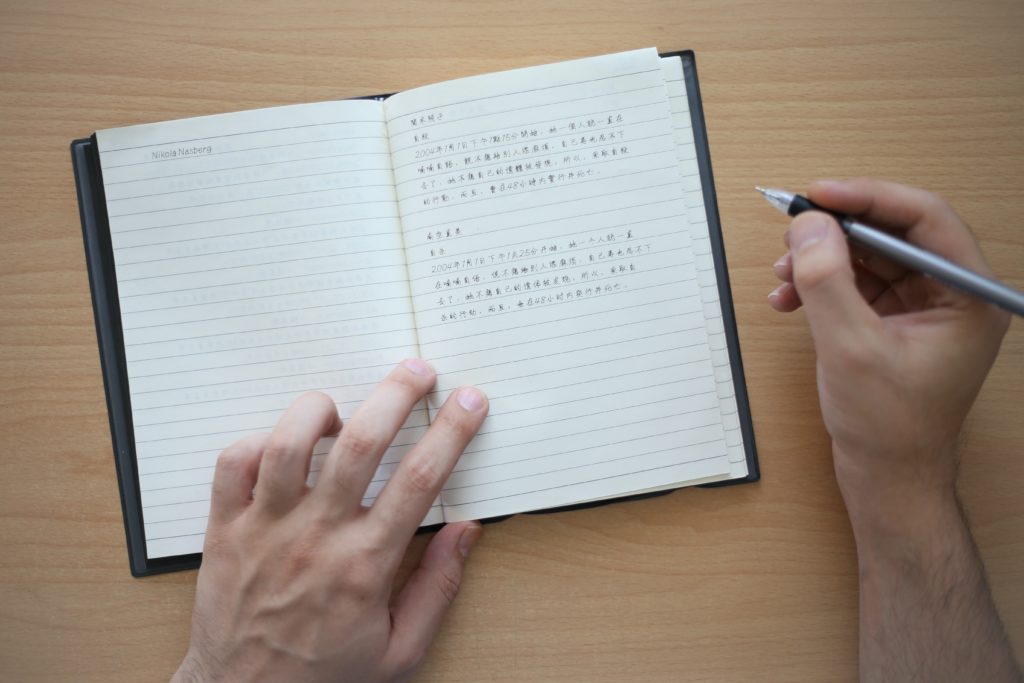
Can I Write an Anime Script without Drawing
Definitely! It’s great when you know how to draw; however, it’s not a deal-breaker.
As I have already said, you can always outsource, and if you have the backing of a production company, you can have them give you a team to work with.
Summary
Just like any form of writing, writing Anime isn’t easy. But, if you’re passionate and committed, you can write beautiful anime scripts or great Manga.
Just make sure you practice regularly and do a lot of research on Japanese culture.
Above all, believe in your ability and ALWAYS put yourself in the shoes of your audience—if you don’t like it, neither will they!
